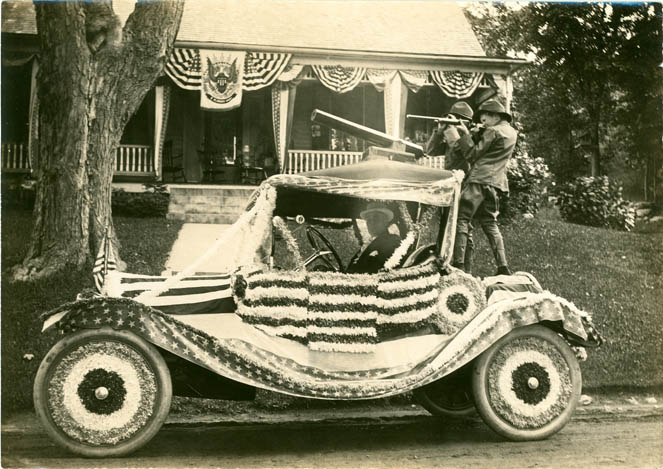"It has condemned people to death," the former apparatchik told me in a scene out of a Le Carre novel. The brilliant old agent comes in from the cold, crosses to our side and, in hours of debriefing, empties his memory of horrors committed in the name of a political ideology he now realizes has gone rotten. Here before me was a catch far bigger than some used Cold War spy. Joseph Stiglitz was chief economist of the World Bank. To a great extent, the new world economic order was his theory come to life.
I "debriefed" Stiglitz over several days—at Cambridge University, in a London hotel and finally in Washington during a big confab of the World Bank and the International Monetary Fund in April 2001. Instead of chairing the meetings of ministers and central bankers as he used to, Stiglitz was kept safely exiled behind the blue police cordons, the same as the nuns carrying a large wooden cross, the Bolivian union leaders, the parents of AIDS victims and the other "antiglobalization" protesters. The ultimate insider was now on the outside.
In 1999 the World Bank fired Stiglitz. He was not allowed a discreet "retirement"; U.S. Treasury Secretary Larry Summers, I'm told, demanded a public excommunication for Stiglitz's having expressed his first mild dissent from globalization World Bank-style.
In Washington we talked about the real, often hidden, workings of the IMF, World Bank and the bank's 51 percent owner, the U.S. Treasury.**
In addition to the Ecuador document, I had by 2001 obtained a huge new cache of documents, from sources unnamable, from inside the offices of his old employer, marked "confidential," "restricted" and "not otherwise [to be] disclosed without World Bank authorization." Stiglitz helped translate these secret "Country Assistance Strategies" from bureaucratese.***
There is an Assistance Strategy specially designed for each nation, says the World Bank, following careful in-country investigations. But according to insider Stiglitz, the Bank's staff "investigation" consists of close inspection of a nation's five-star hotels. It concludes with the Bank staff meeting some begging, busted finance minister who is handed a "restructuring agreement," pre-drafted for his "voluntary" signature (I have a selection of these).
Each nation's economy is individually analyzed; then, according to Stiglitz, the Bank hands every minister the exact same four-step program.
Step l
Step 1 is Privatization—which Stiglitz says could more accurately be called "Briberization." Rather than object to the sell-offs of state industries, he says national leaders—using the World Bank's demands to silence local critics—happily flog their electricity and water companies. "You could see their eyes widen" at the prospect of 10 percent commissions paid to Swiss bank accounts for simply shaving a few billion off the sale price of national assets.
And the U.S. government knows it, charges Stiglitz—at least in the case of the biggest "briberization" of all, the 1995 Russian sell-off. "The U.S. Treasury view was this was great as we wanted Yeltsin reelected. We don't care if it's a corrupt election. We want the money to go to Yeltsin" via kickbacks for his campaign.
I have to interject that Stiglitz is no conspiracy nutter ranting about Black Helicopters. The man was inside the game, a member of Bill Clinton's cabinet as chairman of the president's Council of Economic Advisers.
Most heinous for Stiglitz is that the U.S.-backed oligarchs' corruption stripped Russia's industrial assets, cutting national output nearly in half, causing economic depression and starvation.
Step 2
After briberization, Step 2 of the IMF/World Bank's one-size-fits-all rescue-your-economy plan is Capital Market Liberalization. This means repealing any nation's law that slows down or taxes money jumping over the borders. In theory, capital market deregulation allows foreign banks' and multinational corporations' investment capital to flow in and out. Unfortunately, in countries like Indonesia and Brazil, the money simply flowed out and out. Stiglitz calls this the "hot money" cycle. Cash comes in for speculation in real estate and currency, then flees at the first whiff of trouble. A nation's reserves can drain in days, hours. And when that happens, to seduce speculators into returning a nation's own capital funds, the IMF demands these nations raise interest rates to 30 percent, 50 percent and 80 percent.
"The result was predictable," said Stiglitz of the hot money tidal waves in Asia and Latin America. Higher interest rates demolished property values, savaged industrial production and drained national treasuries.
Step 3
At this point, the IMF drags the gasping nation to Step 3: Market-Based Pricing, a fancy term for raising prices on food, water and domestic gas. This leads, predictably, to Step 3l/2: what Stiglitz calls "the IMF riot." The IMF riot is painfully predictable. When a nation is "down and out, [the IMF] takes advantage and squeezes the last pound of blood out of them. They turn up the heat until, finally, the whole cauldron blows up"—as when the IMF eliminated food and fuel subsidies for the poor in Indonesia in 1998 and the nation exploded into riots. There are other examples—the Bolivian riots over water price hikes pushed by the World Bank in April 2000 and, in early 2001, the riots in Ecuador over the rise in domestic gas prices that we found in the secret Ecuador "Assistance" program. You'd almost get the impression that the riot is written into the plan.
And it is. For example, we need only look at the confidential "Interim Country Assistance Strategy" for Ecuador. In it the Bank states—with cold accuracy—that they expected their plans to spark "social unrest," their bureaucratic term for a nation in flames.
Given the implosion of the economy, that's not surprising. The secret report notes that the plan to make the U.S. dollar Ecuador's currency has pushed 51 percent of the population below the poverty line, what Stiglitz called their squeeze-until-they-explode plan. And when the nation explodes, the World Bank "Assistance" plan is ready, telling the authorities to prepare for civil strife and suffering with "political resolve." In these busted nations, "resolve" means tanks in the street.
Each new riot (and by "riot" I mean "peaceful demonstration dispersed by batons or bullets") causes panicked flights of capital and government bankruptcies. Such economic arson has its bright side, of course—foreign corporations can then pick off a nation's remaining assets, such as the odd mining concession or port, at fire-sale prices.
Stiglitz notes that the IMF and World Bank are not heartless adherents to market economics. At the same time the IMF stopped Indonesia from "subsidizing" food purchases, "when the banks need a bail-out, intervention [in the market] is welcome." The IMF scrounged up tens of billions of dollars to save the country's financiers and, by extension, the U.S. and European banks from which they had borrowed.
A pattern emerges. There are lots of losers in this system, but two clear winners: the Western banks and U.S. Treasury. They alone make the big bucks from this crazy new international capital churn. For example, Stiglitz told me about an unhappy meeting, early in his World Bank tenure, with the president who had just been elected in Ethiopia's first democratic election. The World Bank and IMF had ordered Ethiopia to divert European aid money to its reserve account at the U.S. Treasury, which pays a pitiful 4 percent return, while the nation borrowed U.S. dollars at 12 percent to feed its population. The new president begged Stiglitz to let him use the aid money to rebuild the nation. But no, the loot went straight off to the U.S. Treasury's vault in Washington.
Step 4
Now we arrive at Step 4 of what the IMF and World Bank call their "poverty reduction strategy": Free Trade. This is free trade by the rules of the World Trade Organization and World Bank. Stiglitz the insider likens free trade WTO-style to the Opium Wars. "That too was about opening markets," he said. As in the nineteenth century, Europeans and Americans today are kicking down the barriers to sales in Asia, Latin America and Africa, while barricading their own markets against Third World agriculture.
In the Opium Wars, the West used military blockades to force markets open for their unbalanced trade. Today, the World Bank can order a financial blockade that's just as effective—and sometimes just as deadly.
Stiglitz is particularly emotional over the WTO's intellectual property rights treaty (it goes by the acronym TRIPS, of which we have more to say later in this chapter). It is here, says the economist, that the new global order has "condemned people to death" by imposing impossible tariffs and tributes to pay to pharmaceutical companies for branded medicines. "They don't care," said the professor of the corporations and bank ideologues he worked with, "if people live or die."
By the way, don't be confused by the mix in this discussion of the IMF, World Bank and WTO. They are interchangeable masks of a single governance system. They have locked themselves together by what they unpleasantly call "triggers." Taking a World Bank loan for a school "triggers" a requirement to accept every "conditionality"—they average 114 per nation—laid down by both the World Trade Organization and IMF. In fact, said Stiglitz, the IMF requires nations to accept trade policies more punitive than the official WTO rules.
Stiglitz's greatest concern is that World Bank plans, devised in secrecy and driven by an absolutist ideology, are never open for discourse or dissent. Despite the West's push for elections throughout the developing world, the so-called Poverty Reduction Programs are never instituted democratically, and thereby, says Stiglitz, "undermine democracy." And they don't work. Black Africa's productivity under the guiding hand of IMF structural "assistance" has gone to hell in a handbag.
Did any nation avoid this fate? Yes, said Stiglitz, identifying Botswana. Their trick? "They told the IMF to go packing."
So then I turned on Stiglitz. Okay, Mr. Smart-Guy Professor, how would you help developing nations? Stiglitz proposed radical land reform, an attack at the heart of what he calls "landlordism," on the usurious rents charged by propertied oligarchies worldwide, typically 50 percent of a tenant's crops. I had to ask the professor: As you were top economist at the World Bank, why didn't the Bank follow your advice?
"If you challenge [land ownership], that would be a change in the power of the elites. That's not high on [the Bank's] agenda." Apparently not.
Ultimately, what drove Stiglitz to put his job on the line was the failure of the Bank and U.S. Treasury to change course when confronted with the crises—failures and suffering perpetrated by their four-step monetarist mambo. Every time their free market solutions failed, the IMF demanded more free market policies.
"It's a little like the Middle Ages," the insider told me. "When the patient died they would say, 'Well, he stopped the bloodletting too soon; he still had a little blood in him.'" I took away from my talks with the professor that the solution to world poverty and crisis is simple: Remove the bloodsuckers.
** The interviews were for the London Observer and BBC Television's Newsnight. See a tape of a segment of the interview and read a long excerpt from the interview with the Dangerous Dissenter at wwui.GregPalast.com/Stiglity].
*** The documents did not come from Dr. Stiglitz. I'm not kidding. He never, ever gave me a confidential document. He didn't have to: So many people in the IMF and World Bank are sick to death of what their bosses make them do, I'm never short of inside info.











